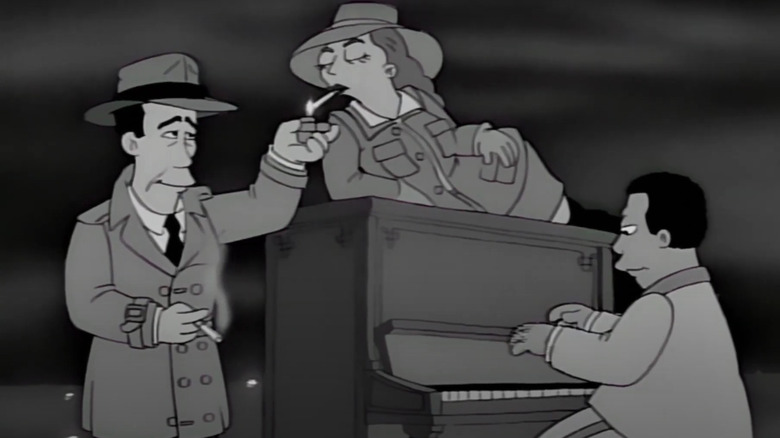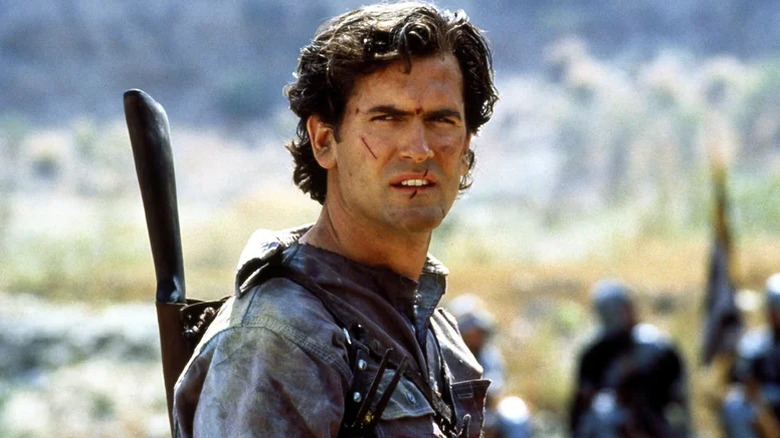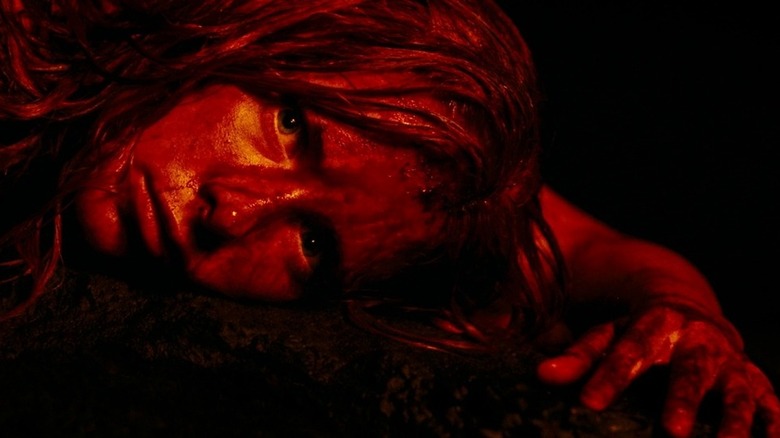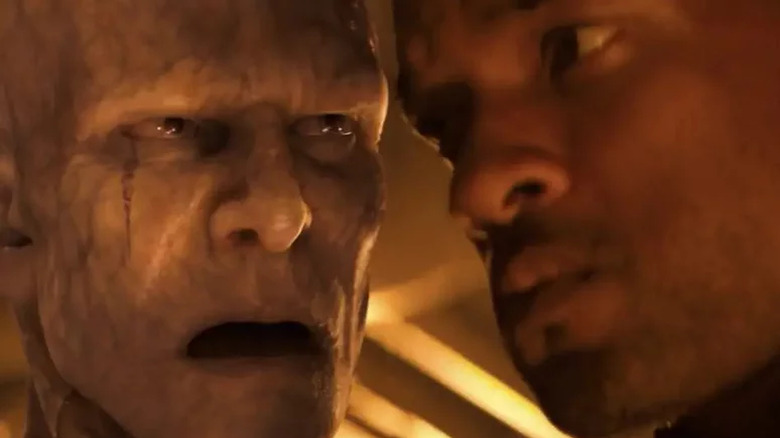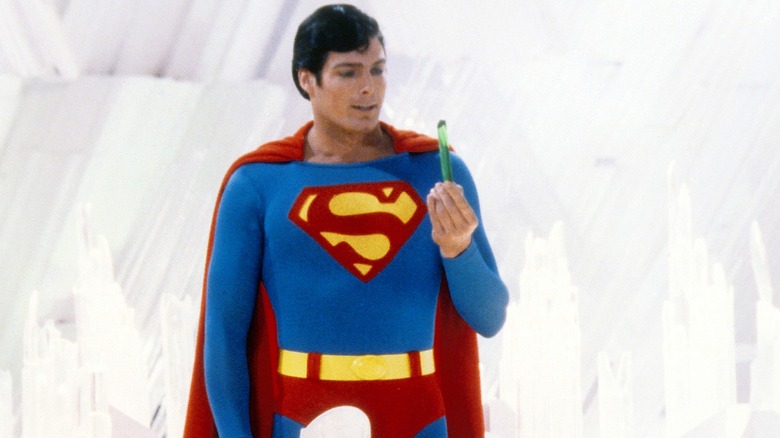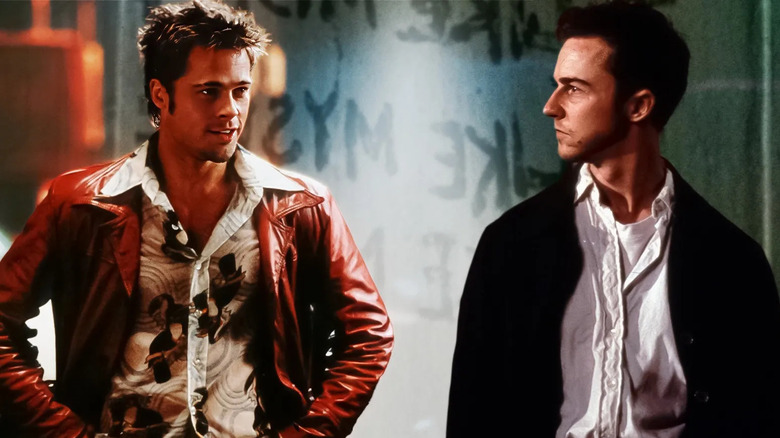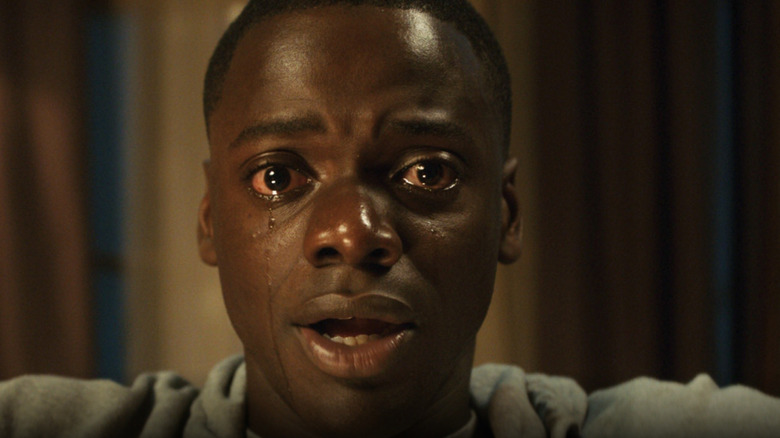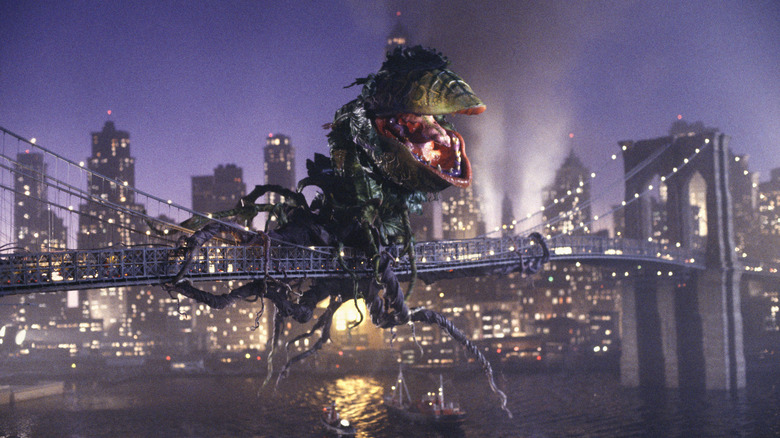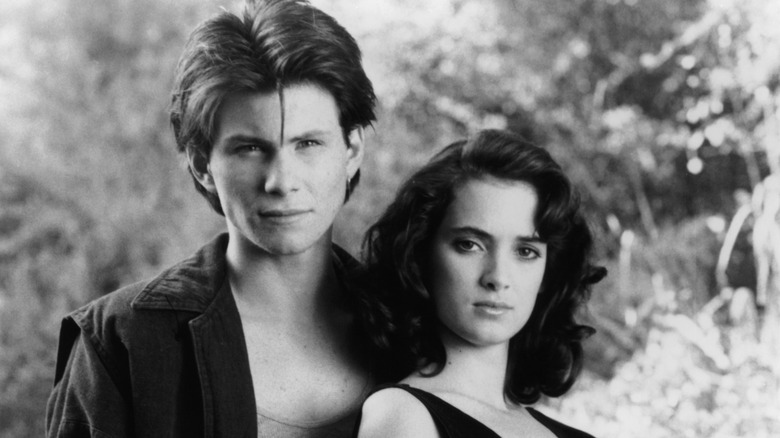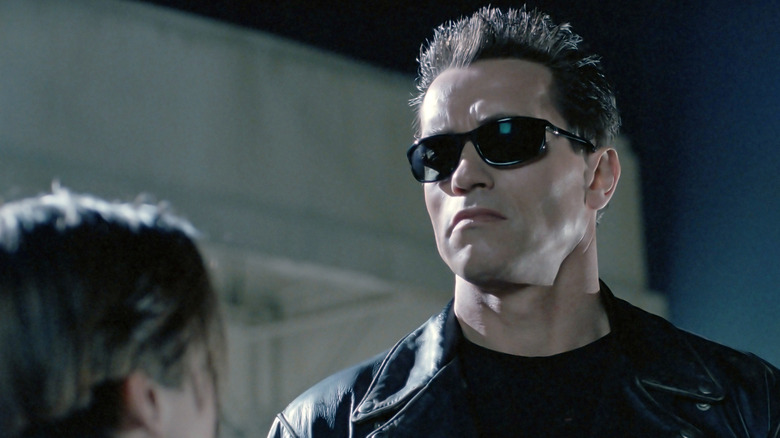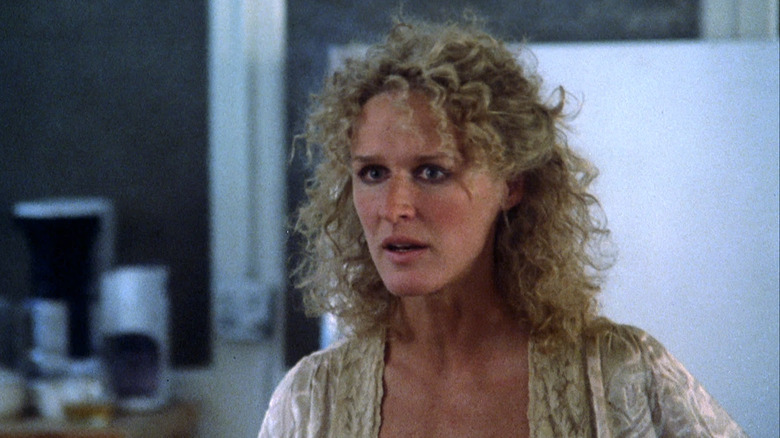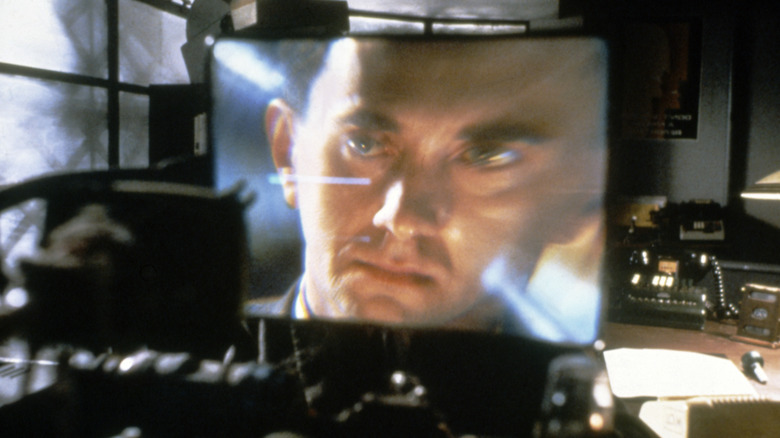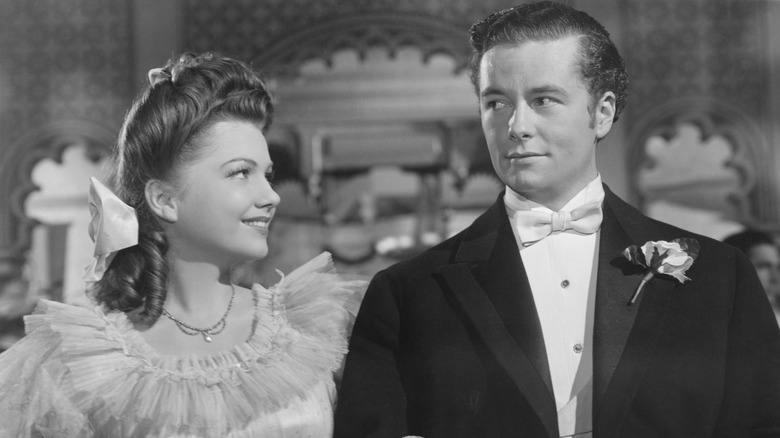13 Alternate Endings That Would Have Changed Everything
The often long and convoluted process of developing a movie also frequently involves story changes along the way. Multiple writers and multiple drafts are common to try to nail that perfect narrative, and even then, the final film remains subject to change. Some say the film is truly found in the editing room but even after that, the studio and test audiences may force a re-think. Directors and writers hate being told to change their stories but the alterations aren't always for the worse — in some cases, the audience's instinct proves correct for posterity.
For the films listed below, the theatrically released version differs from the one previously intended at some point in the process. Sometimes the change turned out for the best artistically, while other times it simply enabled a sequel or tried to avoid depressing the audience. Thanks to the DVD era, many of the alternate endings can be viewed, though, in at least one case, the studio destroyed the footage completely. In every situation, however, it's clear that the original execution would have made a difference, for good or ill.
Warning: major spoilers for every movie ahead.
13. Edge of Tomorrow
In "Edge of Tomorrow," Tom Cruise for once plays a character not good at what he does. Major Bill Cage has never seen combat and works in PR. Objecting to covering a battle in the ongoing war against alien invaders, he's demoted to the role of Private, thrust into combat, and soon finds himself dead. That's not the end of him, though; it seems that every time he dies, he respawns and lives the day over. It turns out this is a result of exposure to alien blood, allowing him to experience the war the way the aliens do, resetting the day and adjusting tactics every time one of their "Alphas" gets killed.
In the end, Cage locates the "Omega," essentially a final boss in the video game-like scenario in which he's been living. Having received a blood transfusion, he loses his ability to respawn and gets seriously wounded, but not before dropping some grenades into the Omega to blow it up. Conveniently, he absorbs its blood and manages to reset the day one more time so that everything begins again. His comrades are back to life; the Omega remains dead.
Some fans thought that Cage should have stayed dead, as a noble sacrifice. Cruise and his favorite screenwriter, Christopher McQuarrie, disagreed. McQuarrie considered a twist where the Omega discovers the plan to kill it but ultimately felt that would exhaust audiences, and that only a happy ending would work.
12. Army of Darkness
In both the theatrical and Sam Raimi director's cut of "Army of Darkness," "Evil Dead" franchise hero Ash (Bruce Campbell) screws up his way home from the medieval period. Theatrically, while he still returns to his own time, and job at retailer S-Mart, he inadvertently brings back a monster by messing up the incantation, and a brief final battle ensues. In the director's cut, he takes too many drops of a sleeping potion, and after a Buck Rogers-like hibernation, lands in post-apocalypse London.
Universal thought that ending too dark, though one can't help suspecting they also realized any potential sequels would be much cheaper if they unfolded in the present day. Indeed, we got three seasons of "Ash vs. Evil Dead," which transpired in modern times, and that probably wouldn't have happened had the show been forced to pick up in a futurescape composed of expensive sets. Ironically, the series itself got canceled after ending on a similar cliffhanger, with Ash finding himself in a "Mad Max"-style future. Knowing the ratings had declined, Campbell and Raimi had a pretty good idea that would be the conclusion, and as Campbell put it, "He was the guy destined to defeat evil in the past, present and future, and he took off with a hot robot chick at the end to go kick in the future. What else do you need?"
Ultimately, the future apocalypse worked out better for fans of more Ash and "Evil Dead" material by being postponed.
11. The Descent
Traumatized Sarah (Shauna Macdonald) lost her husband and daughter in a car accident following a whitewater rafting trip, and a year later, reunites with her friends who were on that same trip to explore some caves. Unfortunately for them, monstrous "crawlers," humanoid creatures that evolved underground, fill the caves. Can the six women escape with their lives? As the action progresses, those whom the crawlers don't kill turn on each other, and in the end, only Sarah survives. In the American theatrical release, she finds an opening, escapes to the surface, and drives away in her truck, as we get one last jump-scare when she sees a ghostly vision of her former friend Juno, whom she injured and left to die after finding out Juno had an affair with her late husband.
The original UK ending goes on one minute longer and reveals the escape was all in Sarah's head. As she dies, she hallucinates her daughter and a birthday cake, the candles of which are actually her torch flickering out.
Director Neil Marshall agreed to the cut if Lionsgate would guarantee a wider theatrical release, which they did. In his mind, the U.S. ending is more horrific, because "Psychologically, she's screwed. All her family and friends are gone, in the most horrendous fashion, some killed by her hand... She survives, but she's clearly out of her mind with fear and madness."
In the (non-Marshall) sequel, she escapes with amnesia.
10. I Am Legend
Richard Matheson's 1954 novel "I Am Legend" has spawned three major movie adaptations: 1964's "The Last Man on Earth," 1971's "The Omega Man," and 2007's "I Am Legend." In all of them, as in the book, the main character, a human surviving in a world of vampire-ish creatures, dies. The 2007 version dehumanized the creatures the most, making them seem completely animalistic. They are nonetheless a match for Will Smith's Neville, who manages to develop a cure for the virus ravaging the globe and creating these Darkseekers. In the theatrical cut, he manages to hand off the cure to an immune woman named Anna before sealing her out of his lab as the monsters attack. Detonating a grenade, he kills the attackers and himself.
That ending preserved the man-versus-monsters theme, but an alternate ending preserved Smith for a potential sequel and added complexity to his adversaries. Test audiences didn't like it as much but it involved Neville realizing the alpha Darkseeker was only trying to protect its mate. They look each other in the eye, Neville apologizes, and both walk away.
In a unique bit of retconning, the sequel currently in production plans to ignore the theatrical ending and treat the alternate version as canon, so that, among other things, Smith can return. It's going to drive continuity nerds nuts when they watch both movies back to back.
9. Superman and Superman II
"Superman" and "Superman II" began production as one large, two-part movie. As the budget ballooned and tensions between director Richard Donner and producers Alexander and Ilya Salkind soured, however, the Salkinds pushed pause on the sequel to get the first out by Christmas, reasoning that if the first were a failure, they could cut their losses.
With the sequel not guaranteed, Donner retooled the expensive special-effects climax already filmed for the second, in which Superman flies backward in time to reverse the damage done to Earth, and made it the ending of the first film instead. The original intent was for Superman to stop the missile headed for California, and hurl it into space, where it would break open the Phantom Zone and free the Kryptonian criminals shown at the film's beginning. That would set the stage for "II."
The Salkinds, however, fired Donner and replaced him with Richard Lester, who had previously been a go-between when Donner and the producers wouldn't deal with each other. In Lester's version, Superman mitigates but can't undo the damage done by the villains, and he gives Lois amnesia with a magic, hypnotic kiss.
Had Donner completed the film to his vision, it's possible the subsequent "Superman III" might not have leaned as hard into comedy. Nonetheless, for years "Superman II" remained the standard for superhero sequels. It's also the model for subsequent films like "Spider-Man 2," which follows a similar emotional arc.
8. Fight Club
The ending of David Fincher's "Fight Club" works on at least two different levels. In the most literal reading, the narrator (Edward Norton) shoots himself in the mouth, somehow misses the brain, and survives, though his alternate personality of Tyler Durden (Brad Pitt) is destroyed. His terrorist plan works, buildings explode and collapse, and he embraces his sort-of love interest Marla (Helena Bonham Carter). A more subjective reading might suggest that he actually does kill himself, and the success of his plan and love life is a dying hallucination.
Neither, however, resembles the alternate Chinese ending.
In that version, censored to appease the communist government — whom one might think would appreciate the overall anti-capitalist theme — the bombs don't explode at all. After a fade to black, a title card "reveals" that, "Through the clue provided by Tyler, the police rapidly figured out the whole plan and arrested all criminals, successfully preventing the bomb from exploding. After the trial, Tyler was sent to lunatic asylum receiving psychological treatment. He was discharged from the hospital in 2012."
Ironically, the book also ended with the narrator in an asylum, so original author Chuck Palahniuk isn't mad about it, even as fans of the movie might be.
7. Get Out
Jordan Peele's racial satire and horror movie proved a major critical and commercial hit in 2017, and won the Oscar for original screenplay. Would it have done so with its original ending?
The story sees Black photographer Chris (Daniel Kaluuya) travel to the countryside with white girlfriend Rose (Allison Williams) to meet his potential in-laws. Little does he know he's just the latest in a string of lovers Rose has brought up to hypnotize and then subject to a horrible medical procedure, wherein the community's Caucasian elderly have their brains transplanted into the bodies of young, strong African Americans.
Chris escapes, and in the originally shot, bleaker ending, strangles Rose to death, only to get arrested and thrown in jail. Like in the original "Night of the Living Dead," it's an ending that reflects real-life racism rather than good triumphing over evil in a horror film. Test audiences reacted to it like the gut punch it was. With actual racial injustice starting to dominate the news cycle, Peele decided they deserved a happier ending, albeit one that still makes a point. In the final cut, Chris stops short of strangling Rose, the cops appear to arrive, but it turns out to just be Chris' friend Rod (Lil Rey Howery), a TSA officer in an airport security car. Audiences still experience the fear that racism might ruin the ending for Chris, followed by a cathartic laugh instead. Not to mention the possibility Rose might survive for a sequel.
6. Little Shop of Horrors
The original "Little Shop of Horrors," a Roger Corman horror-comedy shot over a long weekend, featured a young plant store employee named Seymour who cross-breeds a carnivorous plant. When he realizes it has a taste for human blood, he feeds several people to his creation before finally committing suicide by letting it eat him. The stage musical adaptation amped up the comedy and made the plant an alien now dubbed "Audrey II" after Seymour's love interest. Despite many upbeat tunes, the stage play ends with Audrey II eating everyone, and in some theaters, vines drop down from the ceiling to imply that the audience and the world are next.
In Frank Oz's movie version of the musical, as released, Seymour (Rick Moranis) and Audrey (Ellen Greene) proved so likable that audiences didn't want them to die. Instead, Seymour electrocutes and blows up Audrey II, and he and Audrey move to a nice suburban home. In a nod to the darker ending, however, we see that an Audrey II bud has survived, and is growing in their garden.
Oz's original ending was the darkest yet. Not only do Audrey and Seymour get eaten, but the plant multiplies, grows to kaiju size. and destroys major landmarks before bursting through the movie screen. Test audiences hated it, and to be fair, it probably would've traumatized many generations of kids. Oz, while preferring his original version, acknowledged to Entertainment Weekly that it was effectively unreleasable.
It looks amazing, though.
5. Heathers
"Teenage suiciiiiiide... Don't do it!" pleads the hit song that the characters in Michael Lehmann's 1989 dark comedy listen to. Yet the movie very nearly ended with its heroine going directly against that advice. Veronica (Winona Ryder) and her psychopath boyfriend J.D. (Christian Slater) spend the movie offing elitist classmates and making the deaths look like suicides, but when J.D. plans to blow up the entire school, that's a step too far. In the released cut, Veronica stops him, and he goes outside and blows up just himself, as Veronica re-bonds with her unpopular ex-friend Martha (Carrie Lynn).
Daniel Waters' original script let J.D. succeed in his plan, and the entire school had a prom in Heaven. The studio said no way. He considered other endings, all of which would also have killed off Veronica, including one in which she puts on the bomb and blows up, and another in which Martha stabs her and calls her Heather, like her former snobby peers. The released version is clearly the most audience-friendly, though that initially didn't help. In the summer of Tim Burton's "Batman," "Heathers" proved a financial disappointment. Once on video and cable, however, it turned into a ubiquitous, ever-quotable cult fave, and later begat a stage musical and a TV series. Had its main character become a suicide bomber, it's hard to imagine any studio would've touched the property again post-9/11.
Ryder, however, might have stopped bugging the filmmakers to make the planned sequel.
4. Terminator 2: Judgment Day
The theatrical ending of "Terminator 2" not only sees the defeat of the evil, time-traveling T-1000 (Robert Patrick) by the reprogrammed T-800 (Arnold Schwarzenegger) alongside Sarah Connor (Linda Hamilton) and son John (Edward Furlong). It further implies that, by destroying Cyberdyne and the T-800, they will prevent the future nuke-happy sentient computer Skynet from ever being created. World War III, if it ever happens, won't happen that way. Of course, this also leaves a massive paradox in that John's father, Kyle Reese, will now never go back through time to father him but we all choose to mostly let that slide.
The original ending affirms that, indeed, the apocalypse was averted, and Sarah lived to be an old woman in a happy future. Though one can never say never to franchise extensions, it conclusively shut the door on any that would have happened within Sarah's lifetime. Wanting to keep the door open for further sequels, producer Mario Kassar pushed for a more open ending, and after a test screening, Cameron agreed, saying that the visual aesthetic of that final scene was just too different, and the audience had gotten the point already.
Had "T2" ended more definitively, "Terminator 3" and "The Sarah Connor Chronicles," at the very least, would have taken different narrative routes. Subsequent installments like "Genisys" that altered the timeline in bigger ways might have changed less. The sequel machine is more relentless than Skynet, though, so it would have found a way somehow.
3. Fatal Attraction
A massive hit in 1987, Adrian Lyne's take on the 1980 James Dearden novel "Diversion" was the ultimate '80s sleep-around-and-find-out thriller. Dan (Michael Douglas) has what he assumes is a one-night stand affair with Alex (Glenn Close), after which he thinks he can just go back to his regular happy family life. Alex disagrees and starts behaving like a dangerous stalker. When she finally attacks Dan's wife Beth (Anne Archer) with a knife, Dan seemingly drowns her in the bathtub. She revives for one last jump scare and Beth shoots her, uniting the family in deadly self-defense.
Originally, in the ending we didn't get to see, Alex slashed her own throat, framing Dan for murder in the process. Beth would find evidence exonerating Dan at the last minute but the movie was set to end with the image of Alex killing herself. This version did not go down so well with test audiences, who identified with Dan and wanted Alex punished more severely.
In its final version, "Fatal Attraction" set the tone for many more Yuppie adultery movies to come, including Lyne's own "Indecent Proposal." Meanwhile, Douglas continued, in movies like "Basic Instinct" and "Disclosure," to ride a wave of success as Hollywood's poster boy for privileged white guys in sexual peril. Ironically, he'd win his Best Actor Oscar for "Wall Street," out that same year, in which he played a thoroughly unsympathetic businessman. The contrast between that and his "Fatal Attraction" performance probably didn't hurt.
2. Brazil
Terry Gilliam's thematic trilogy of the imagination — "Time Bandits," "Brazil," and "The Adventures of Baron Munchausen" — posits imagination as its own reward and an antidote to the horrific banality of modern life. "Brazil" is the harshest of the three in execution.
Bureaucrat Sam Lowry (Jonathan Pryce) investigates the government killing of a man falsely accused due to a typing error, and meets trucker Jill (Kim Greist), who resembles the fantasy girlfriend he has dreamed about. When an encounter with the real "terrorist" — rogue repairman Tuttle (Robert De Niro) — places him on the government's treason list, Sam is captured, tortured, and told Jill was killed. Rescued by Tuttle and an army of freedom fighters, he ultimately finds a still-surviving Jill, with whom he drives away.
But wait! At the very end, the movie reveals its "Occurrence at Owl Creek Bridge" twist. Sam only imagined his escape, and he's still in the torture chair. Humming a song to himself, he seems lost inside his own head, dreaming that happy ending while becoming a vegetable in reality.
Despite an overseas release as planned, Universal boss Sid Sheinberg wanted a literal happy ending for the U.S. cut, and edited a proposed 94-minute syndicated TV version with it. Gilliam showed his cut to the LA Film Critics Association, and when they gave it three major awards, the studio gave in. Since then, filmmakers from Tim Burton to Rian Johnson and Zack Snyder have cited it as a major influence.
1. The Magnificent Ambersons
Orson Welles believed that had he been allowed final cut on his follow-up to "Citizen Kane," it would have been an even greater film. Though unsuccessful following RKO's removal of about 40 minutes of footage and changed ending, "The Magnificent Ambersons" has retroactively been reconsidered and assessed as an all-time great — albeit one with a dissonant, awkward ending that still holds it back.
In adapting Booth Tarkington's novel, Welles' version of the film depicted the fall of an old-money family as the invention of the automobile changed the nature of society and business. The story mostly unfolds through the life of George Amberson Minafer (Tim Holt), last heir of the wealthiest family in town. An eternal spoiled brat, George attempts to romance Lucy (Anne Baxter), the daughter of his mother's original suitor, Eugene (Joseph Cotton). When George's father dies, Eugene courts his mother again but George will have none of it and keeps them apart. The family's fortune crumbles and George is forced to take a dangerous job to pay the bills for himself and his aunt Fanny (Agnes Moorhead). Finally, a car hits George and seriously injures him.
In both endings, George and Lucy seemingly get together offscreen. Welles filmed a more tragic, lonely ending for Eugene and Fanny; the studio version suggests they will all become a happy family and Eugene's money will save them, while softening prior scenes to make George more likable. Welles' film career didn't recover for years.
